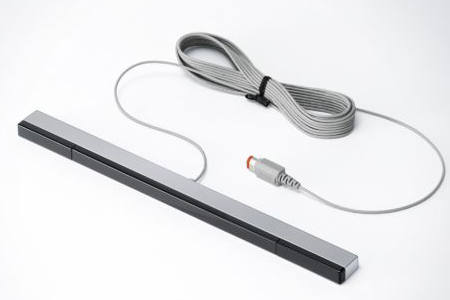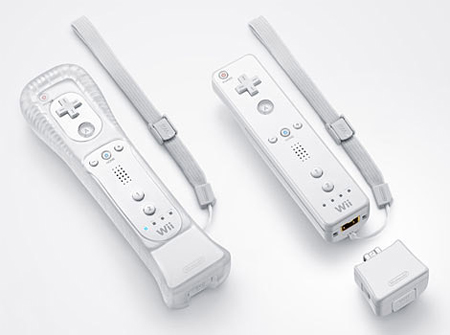Nintendo Wii Remote
The Wii Remote – also known as the WiiMote - which you’ve no doubt seen, or even used, is bundled with Nintendo’s Wii console and acts as its primary controller.
Its unique ability to detect motion and act as a pointing device is made possible by a combination of modern-day technologies. It might be about the same size as a regular TV remote, but there’s plenty happening in this little device.

First and foremost, the Wii Remote needs to be able to detect where a user is pointing, allowing for users to click on certain areas of a screen – similar, in a sense, to how a mouse cursor is used to navigate a computer. In the case of the Wii Remote, this is achieved by a sensor-bar equipped with a series of LEDs (pictured below) and an optical sensor built into the remote.

The Wii Remote’s built-in optical sensor acts like a camera used to locate the sensor bar’s infrared LEDs in its point of view. By plotting where two spots of light fall (one from each end of the sensor bar), the Wii console is able to determine where the remote is pointing in relation to the screen.
All sounds very clever – and it is – but it does have one obvious drawback, too. A user, or indeed multiple users, would need to remain within the sensor bar’s point of view in order for the system to work.
In addition to knowing where a user is pointing, the Wii Remote can also calculate how it’s being moved. This is done with the use of accelerometers – tiny chips that feature a piece of silicon anchored at one end and allowed to move at the other between an electric field created by a pair of capacitors. Accelerating the remote in one direction causes the silicon to move and disrupt the electronic field. That change is translated to motion, and the Wii Remote can measure acceleration on three axes – allowing for the ability to perform a variety of gestures such as moving side to side, twisting, and pushing and pulling.
On top of all this, the data captured by the optical sensor and accelerometers needs to be sent back to the Wii console without wires. In order to achieve that, the Wii remote contains a built-in Bluetooth chip that allows for two-way communication with the console.
Sounds brilliant, and it is, but hardcore gamers have argued that the Wii Remote isn’t completely accurate, and doesn’t offer as precise control as say a joypad. Hoping to increase the accuracy of the remote, Nintendo in June 2009 launched an expansion device dubbed Wii MotionPlus.

The optional accessory, pictured above, plugs into any existing Wii Remote and features a multi-axis gyroscope that, when combined with the accelerometer and sensor-bar, should offer a far more accurate tracking mechanism.
That’s the Wii remote, and it has thus far set the standard for motion-based games control. Nonetheless, both Sony and Microsoft think they will top it in 2010.









